The 2nd Annual meeting of the PEARRL network kicked off in Frankfurt with an open Regulatory Science symposium on ‘In silico and In vitro tools to support Regulatory applications’ on 18-19 June 2018. The Symposium was hosted by Johann Wolfgang Goethe University.
A key highlight of the symposium was the top-notch list of external experts who presented at the meeting including:
The focus of Day 1 of this Open Symposium was on ‘In silico tools to support regulatory applications’. The open symposium was attended by over 50 pharmaceutical scientists from all over Europe, including some of the top researchers in drug product development from both academia and industry. Also in attendance were representatives from regulatory authorities in Europe, including BfARM and HPRA, as well as seventh semester Pharmacy students from the Goethe University.
- Rodrigo Cristofoletti, National Health Surveillance Agency (ANVISA), Brazil,
- Andrea Edginton, School of Pharmacy, University of Waterloo, Canada,
- Mehul Mehta, Center for Drug Evaluation and Research, FDA; USA
- David Turner, Simcyp Limited (A Certara Company), United Kingdom
- Oliver Hatley, Simcyp Limited (A Certara Company), United Kingdom
- Werner Weitschies, University of Greifswald,
- Anette Müllertz, University of Copenhagen,
- Richard Barker, AstraZeneca, UK
The focus of Day 1 of this Open Symposium was on ‘In silico tools to support regulatory applications’. The open symposium was attended by over 50 pharmaceutical scientists from all over Europe, including some of the top researchers in drug product development from both academia and industry. Also in attendance were representatives from regulatory authorities in Europe, including BfARM and HPRA, as well as seventh semester Pharmacy students from the Goethe University.
Professor Jennifer Dressman initiated proceedings and welcomed the attendees to the 2nd Annual meeting of the PEARRL network. Professor Dressman outlined the background of the PEARRL network and the vision for establishing a pan-European training network that develops innovative drug development strategies and regulatory tools tailored to facilitate earlier access to medicines.
| An introduction to the first session was provided by provided by Dr. Rodrigo Cristofoletti the Brazilian Health Regulatory Agency (Anvisa), who spoke about the ‘Nuts and bolts of Physiologically based pharmacokinetic PbPK Modelling’. In keeping with the theme of the Innovative training network, Dr. Cristofoletti emphasized that ‘PBPK modelling is not just about maths and stats: models help to develop new knowledge'. |
| The second speaker was Oliver Hatley from Certara Ltd. (formerly SimCYP Ltd), where he outlined the utility of PBPK modelling to support regulatory filings for new drugs and reduce the burden of in vivo testing required specifically for drug-drug interaction studies. The presentation clearly highlighted the increased regulatory acceptability of in silico modelling in this area. To date there have been over 100 instances of label claims informed by PBPK including DDI, absorption, ethnic bridging and formulation. Dr. Hatley used two industrial case studies involving Ibrutinib and Letermovir to illustrate these applications. |
| The third speaker was Professor Andrea Edginton from the University of Waterloo in Canada. Prof. Edginton provided an update on the latest developments on the use of PbPK modelling and simulation in paediatric drug development. Two key messages from Professor Edginton to early career PbPK enthusiasts are (1) for accurate PK predictions, effective parameterization is essential and (2) robust sensitivity analysis is essential in model development and evaluation. She explained the many gaps in our understanding of differences in dosing between children and adults and PBPK and provided examples of where PBPK was employed to bridge these gaps and improve dosing in paediatric patients. |
| The next speaker was Dr. Mehul Mehta from the Center for Drug Evaluation and Research, FDA. Dr Mehta provided an overview of FDA’s activities in the regulatory approval of medicines, focusing on new drug approvals. He commented that PBPK is a very powerful tool to enhance knowledge in relation to new drug filings (e.g. 38 cases between 2009 and 2016 where prescribing information was supported by PBPK) but he also stressed that for utilization in regulatory decision-making the FDA needs to see the data. He presented case studies of PBPK simulations for predicting drug interactions between simvastatin and diltiazem. Dr. Mehta highlighted that the vast majority of cases where PBPK was used to support regulatory filings were in the DDI domain (>70% of cases), but believes there are more opportunities for implementing PBPK in regulatory applications. |
| The next speaker was Professor Dressman, who presented a lecture on understanding food effects from a biopharmaceutical perspective. She presented an overview of the various tools useful in predicting food effects – using case Danazol, Nifedipine and Zolpidem as examples. A key message from the presentation was the merits of combining results from biorelevant dissolution tests with physiologically based pharmacokinetic modeling to create ‘in vitro – In silico – In vivo’ relationships. |
| David Turner, Certara UK Ltd., was the next presenter and discussed the utility of PBPK models for understanding precipitation of weak bases in the GIT. He highlighted some key industry and regulatory trends in relation to PBPK for regulatory applications including (1) the increase in PBPK data in regulatory filing on a yearly basis since 2010, with more than 20 filings using PBPK to support applications in 2015 alone and (2) recent guidelines from the EMA on the appropriate use of PBPK modelling and simulation. |
The final session of the day was focused on more specific case studies where in silico tools were utilised to support regulatory applications. Rodrigo Cristofoletti presented an example of prediction of clinically based bioequivalence specifications for ibuprofen and ibuprofen salts. Subsequently Andrea Edginton shared research on approaches for extrapolating the healthy adult dose-exposure relationship to special populations using PBPK.
| The theme for the 2nd day of the open Symposia was ‘In vitro tools and biorelevant testing to support Regulatory applications’. The first speaker was Dr. Mehul Mehta (FDA) who discussed the regulatory perspectives on defining the clinical relevance of specifications with a focus on Clinical Pharmacology and Biopharmaceutics. He outlined how a central construct characterising risk is the ‘exposure-response’ (E-R) framework for a given drug. He explained that depending on the therapeutic indication, the risk benefit framework may different, for example in the case of a new anti-cancer treatment a higher risk benefit ratio will be considered due to ‘unmet medical need’. Using Dabigratran as an example, he outlined how given the steep E-R relationship for both safety and efficacy, and high PK variability, BE limits necessitate tighter specifications to prevent generic drug products being approved that that display higher variability than the reference (i.e. within subject variability should be < 2.5. In the biopharmaceutics field, he outlined the approaches for greater flexibility for well-behaved IR products e.g. BCS Class 1 and 3 such as disintegration tests in lieu of dissolution tests. Similarly more ‘liberal BE specifications’ may be considered for a drug with a well characterised non-steep/shallow E-R framework. In this case, once the applicant demonstrates that a good IVIVR is in place, and provides In vivo data for ‘process variants’, which demonstrate that formulation/manufacturing failures are clinically justifiable given there are no exposure differences. |
| The next speaker was Dr. Mark McAllister from Pfizer UK, who shared his insights from the industrial point of view on some of the topics discussed during the symposium. He discuss the importance the ‘biopharmaceutical risk profile’ and necessity for quick turnaround time for developing formulation products for new lead drug candidates. There is a clear need in the industry for ‘smart’ enabling formulations that address the low solubility challenge for new drug candidates. He put forward that while the conventional dissolution test have stood the test of time for BCS class 1/3 compounds, for poorly soluble ‘brick dust’ and ‘grease ball’ drugs, more biorelevant biopharmaceutics tests are needed to characterise efficacy. This industry need for predictive in vitro and in silico tools to characterise dug products was even more pressing given the much shorter development timelines for drugs that are eligible for ‘break-through therapy’ designation with accelerated regulatory approval pathways. The need for systemic validation of the various in vitro test methods that are being developed to address these drugs was highlighted, with a goal of moving towards common methodology that facilitates comparability between tests and between different laboratories. |
| Karl Box from Pion UK Ltd presented on novel, small-scale in vitro tools for evaluating drug product performance. He provided an in depth overview of the Surface Dissolution Imaging technique that has been pioneered by Pion (formerly Sirius). The technique explores how dual wavelength light can be employed to gain insights on drug release characteristics e.g. intrinsic dissolution rate under dynamic and biorelevant conditions. Subsequently the inForm platform was described, focusing on the ability to assess precipitation risk (or biphasic Dissolution Risk assessment) for Carvediol and Itraconazole upon transition from an aqueous to lipid compartment. The µflux setup, which employs a biomimetic membrane was also presented. The latest innovation from Pion is the Macroflux device to address the industry need for an in vitro dissolution-permeation profiling of drug formulations. Finally, a case study was presented to illustrate how novel flux devices can be employed to delineate difference in vitro release characteristics of different formulations and predict BE risks and/or reduce risk of BE failures In vivo. |
| Dr. Edmund Kostewicz from Goethe University presented the last lecture of the morning session focusing on the transfer model for exploring supersaturation and precipitation after oral drug product administration. Starting with needs that were emerging in the early 2000s, he outlined how his research was the first to explore the complex interactions between hydrodynamics and media composition under biphasic transfer conditions. The outputs from this novel in vitro testing were then linked to in vivo data, confirming the utility of the transfer model in drug development. He then presented the latest research emerging from his lab using the transfer model to develop enhanced IVIVE and provide scientific support in regulatory applications, using itraconazole and cinnarazine as case studies. He concluded by citing findings from a recent survey of 11 pharmaceutical companies on current practices for using physiologically relevance in vitro and in silico tools in a regulatory setting, 100% of respondents confirmed that they utilised biorelevant tools to support regulatory filings and 5/11 respondents confirmed they use a transfer model to predict clinical performance of weak base drugs. |
| To kick off the afternoon session Dr. Maria Vertzoni presented on the BioGIT (Biorelevant GastroIntestinal Transfer) system. This in vitro model is a dynamic dual chamber system designed to simulate the gastric and duodenal intestinal compartments (Kourentas et al Eur. J. Pharm. Sciences 2016). Cases studies were presented which demonstrated the utility of the BioGIT to predict in vivo intraluminal concentrations determined from intestinal sampling of healthy volunteers in studies involving eight different drugs (including Itraconazole, Nifedipine and fenofibrate). Kourentas, A., Vertzoni, M., Barmpatsalou, V. et al. AAPS J (2018) 20: 71. https://doi.org/10.1208/s12248-018-0231-8. |
| Prof. Werner Weitschies, University of Greifswald shared his experiences on investigating of gastric emptying in humans and simulation of gastric hydrodynamic using the GastroDuo system. He presented some fascinating observations which dispel many of the assumptions regarding gastric emptying of oral dosage forms. He also shared an interesting ‘Pearrl of wisdom’ for ESRs regarding mean plasma concentration profiles – he advised ‘Don’t trust mean plasma concentration profiles, as they can mask the real life behaviour, which is clearer from the individual plasma profiles’. As an example he presented data showing that while the vast majority of capsules disintegrate in stomach, about 1 in 20 capsules disintegrate in the small intestine due to rapid gastric emptying by the MMC. He also presented evidence that the stomach is not a homogenous mixing sink/organ. He also outlined how, in the fed state, gastric emptying of water can be faster than widely believed. He explained this using the ‘stomach road’ or ‘magenstrasse’ hypothesis. He subsequently introduced data from the Gastro duo model to simulate dynamic conditions in in vivo. |
| The next presenter was Professor Anette Müllertz from the University of Copenhagen. Prof. Mullertz provded an overview of the Dynamic Gastric Model (DGM) in the evaluation of oral drug products. She outlined how the choice of lipase can significantly influence the digestion activity, with microbial derived enzymes displaying higher activity relative to mammalian derived lipases. Prof. Müllertz outlined the applications of the DGM for assessing oral dosage performance – and shared her expertise on the merits and weakness of the DGM model. She also presented an interesting study exploring the entero-coated capsule behaviour in the stomach using the DGM model and comparing to in vivo conditions using PillCAM visualizing capsules. |
| The final speaker of the symposium was Richard Barker, AstraZeneca, who explained the use of TIM-1 system for the evaluation of oral drug products. The model is a four compartment dynamic model and has ‘all but replaced’ preclinical testing of oral products in vivo in dogs at AZ. He provided some examples of industrial cases studies employing TIM-1 in fast-track regulatory applications, including Acalabrutinib. A key role for TIM-1 at AZ is in providing mechanistic insight into possible cases of unanticipated in vivo performance or predicting biopharmaceutical parameters under worst case In vivo conditions (e.g. PPI/achlorhydria conditions). |
Overall, the Symposium provided the attendees an open, up-to-date and transparent appraisal of the latest in silico and in vitro tools to support regulatory applications and illustrating how these advances in regulatory science are paving the way for shorter development timelines and faster access to market for emerging new medicines.

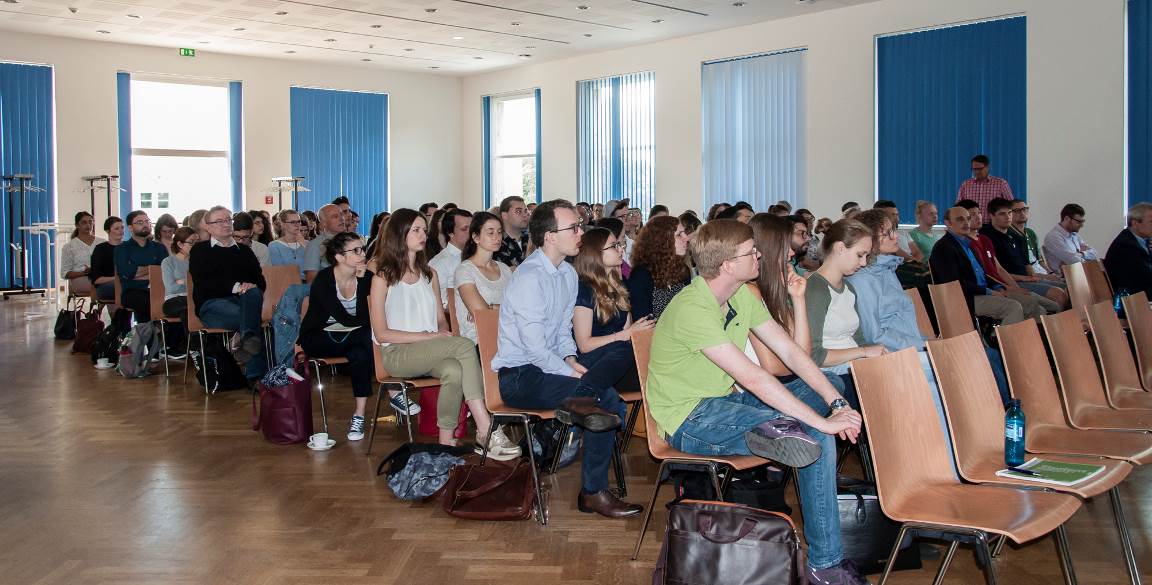
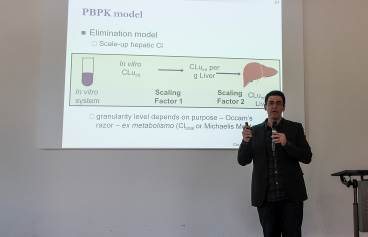
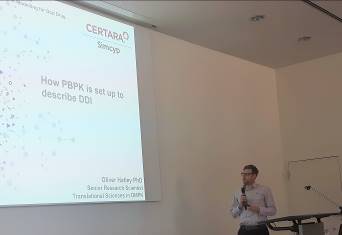
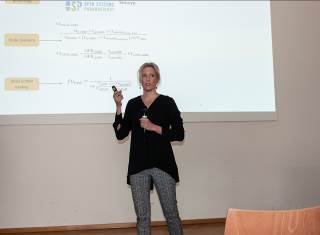
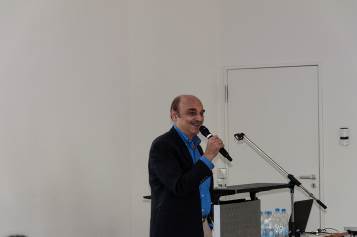
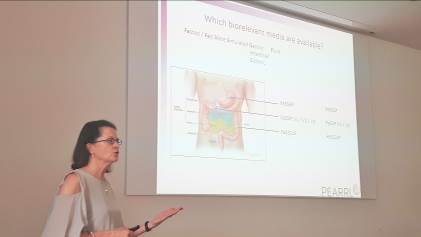
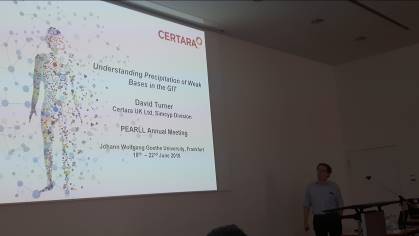
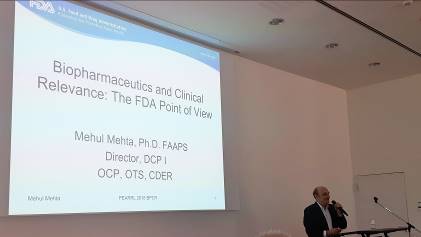
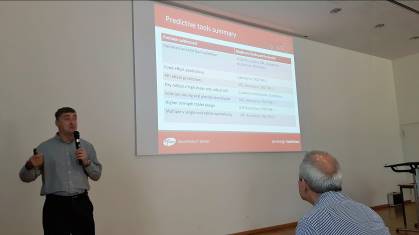
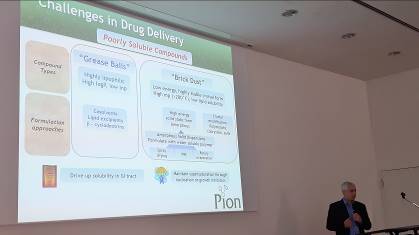
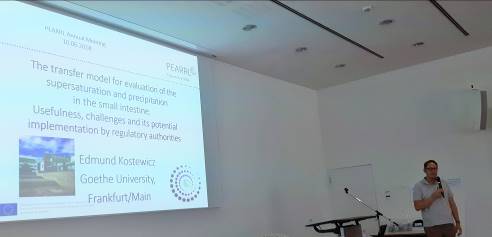
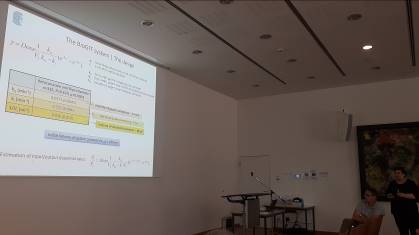
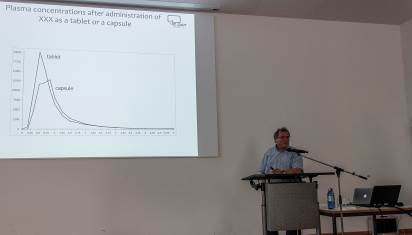
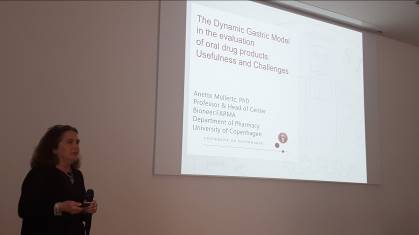
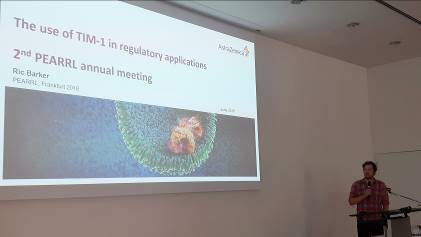
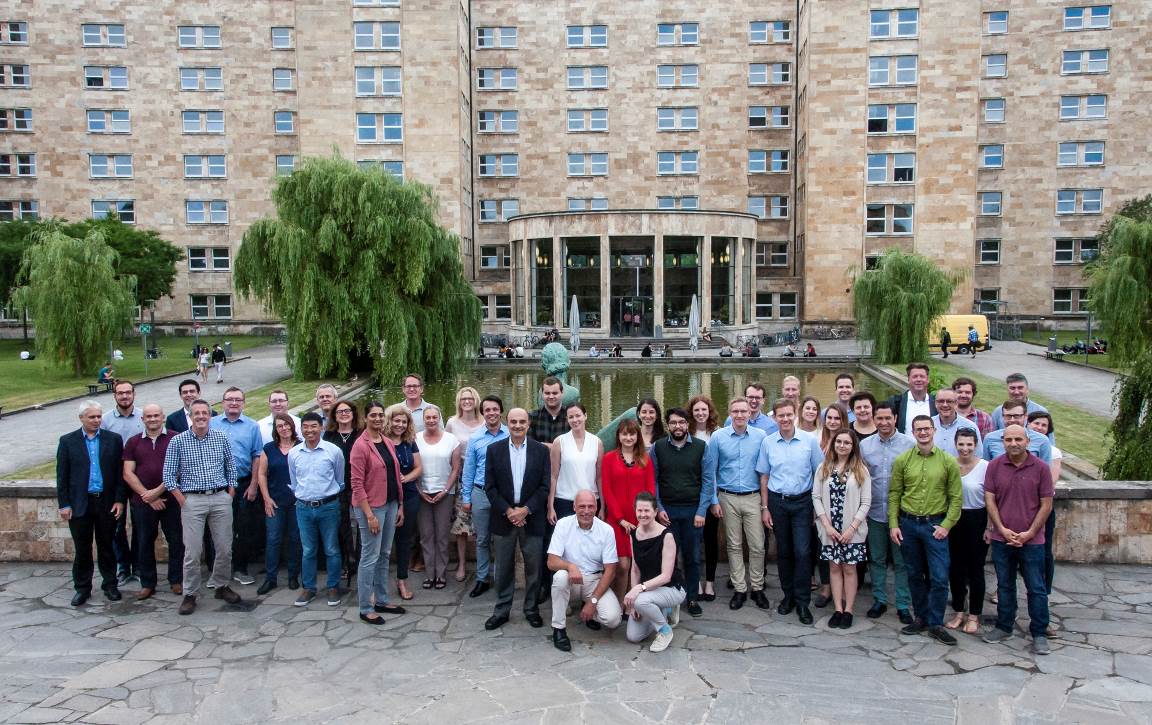
 RSS Feed
RSS Feed
